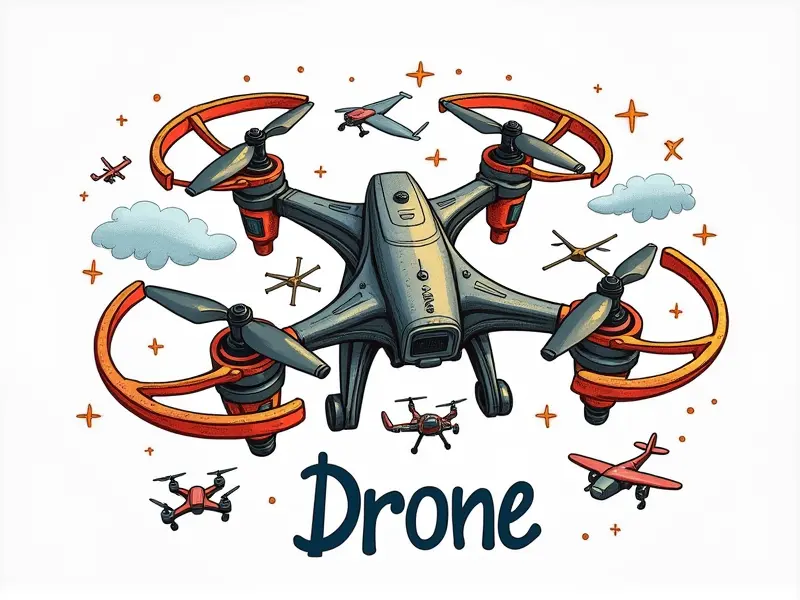How does a drone work?

How Do RC Quadcopters Really Work?
Drones, particularly quadcopters, operate on the principles of aerodynamics and electrical engineering. A typical quadcopter consists of four rotors arranged in an X or + configuration, each equipped with a propeller that spins to generate lift.
Understanding Drone Propulsion Systems
The propulsion system is central to how drones function. Each motor powers a corresponding propeller, and the speed at which these motors operate determines the drone's vertical movement and stability. By varying the RPM (Revolutions Per Minute) of each motor, the flight controller adjusts the thrust to achieve lift and maneuverability.
The Science Behind FPV Racing Drones
First-Person View (FPV) racing drones are engineered for speed and agility. These drones use high-speed motors and lightweight frames to maximize acceleration and responsiveness. The propulsion system in an FPV drone is optimized for quick bursts of power, enabling racers to navigate tight courses with precision.
Unveiling the Secrets of Drone Flight
The flight dynamics of a drone involve complex interactions between its mechanical components and software systems. Drones use sophisticated algorithms to maintain stability and control during flight. These algorithms interpret sensor data from gyroscopes, accelerometers, GPS modules, and barometric pressure sensors to calculate pitch, roll, yaw, altitude, speed, and orientation.
Inside the Mechanics of Drones Explained
- Motors: Brushless DC motors provide efficient power output for propellers.
- Propellers: Propeller size and pitch determine thrust and efficiency.
- Flight Controller (FC): Manages motor speeds, stabilizes flight, and processes sensor data.
- Battery: Lithium-Polymer (LiPo) batteries supply the necessary electrical power.
What Makes an RC Helicopter Fly?
An RC helicopter operates on similar principles but with added complexity. It uses a main rotor for lift and forward movement, and a tail rotor to counteract torque from the main rotor. The pitch of each blade is controlled by servo motors, enabling precise control over altitude, yaw, and roll.
Breaking Down Drone Technology Simplified
Drones are essentially unmanned aerial vehicles (UAVs) that combine hardware with software for autonomous or remote-controlled flight. Key components include:
- Frame: The structural body of the drone, usually made from carbon fiber or plastic.
- Motors and ESCs (Electronic Speed Controllers): Control motor RPM to adjust thrust.
- Battery: Powers all electrical components.
- Sensors: Provide real-time data on orientation, altitude, speed, and more.
- Firmware: Software that runs the flight controller to manage drone operations.
How Do Drones Maintain Stability in Air?
Drones use a combination of hardware sensors and software algorithms to maintain stability. Gyroscopes measure angular velocity, accelerometers detect linear acceleration, barometric pressure sensors track altitude changes, and GPS modules provide location data. These sensors feed information into the flight controller, which adjusts motor speeds to keep the drone steady.
How Propellers Power Your RC Aircraft
The propellers on a drone are critical for generating lift and thrust. Each propeller rotates at high RPMs, creating downward airflow that counteracts gravity. By adjusting the speed of each motor (and thus each propeller), the flight controller can fine-tune the drone's vertical movement and rotational stability.
The Science Behind Modern Drones Revealed
Modern drones incorporate advanced technologies to enhance performance and functionality:
- Autopilot Systems: Enable autonomous flight modes like waypoint navigation, follow-me, and return-to-home.
- Vision Processing: Cameras and image recognition software help in obstacle detection and avoidance.
- Machine Learning: Improves drone performance through adaptive algorithms that learn from data collected during flights.
The Secrets of Drone Stability and Control
Maintaining stability and control is crucial for safe and efficient drone operation. Key factors include:
- Balanced Weight Distribution: Ensures that the center of gravity is correctly positioned.
- Tuned Propellers and Motors: Properly matched propeller size and pitch with motor power output.
- Firmware Updates: Regular updates to optimize flight controller performance.
Conclusion
The mechanics behind drones are intricate yet fascinating. From the basic principles of lift generation to advanced stabilization algorithms, understanding how a drone works reveals the technological marvels that make modern UAVs possible. Whether you're an enthusiast or professional user, delving into the science and technology behind drones offers valuable insights into their capabilities and potential.

